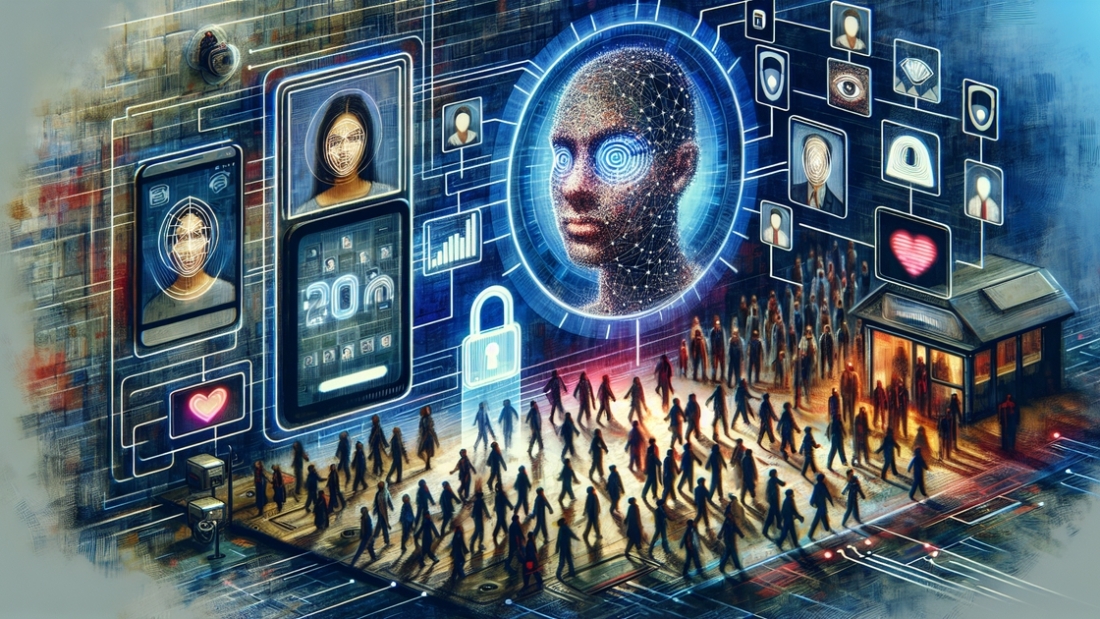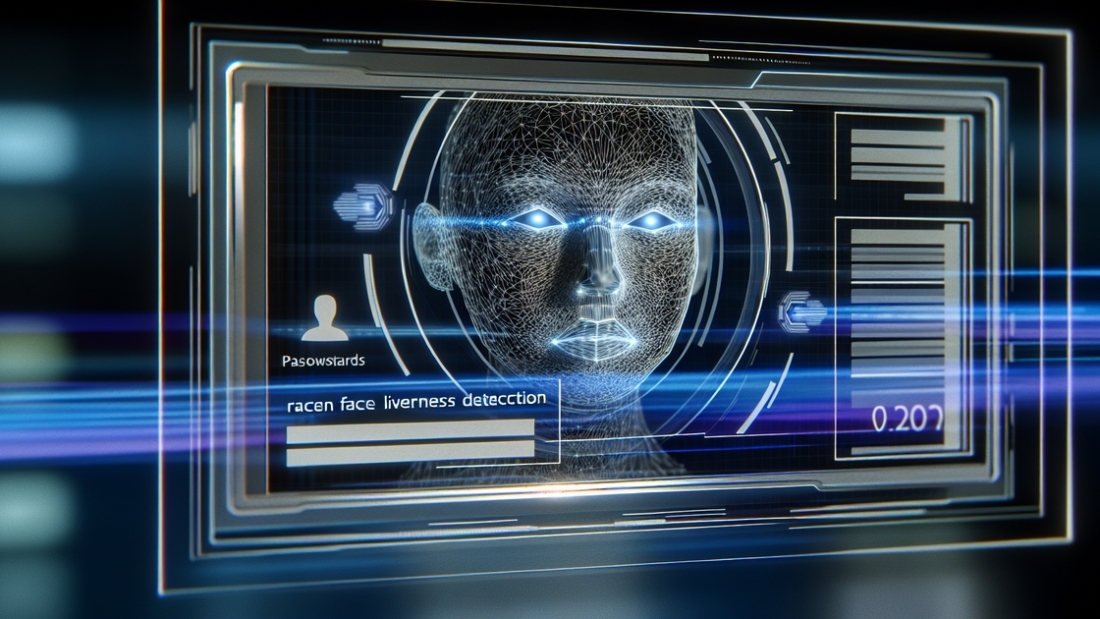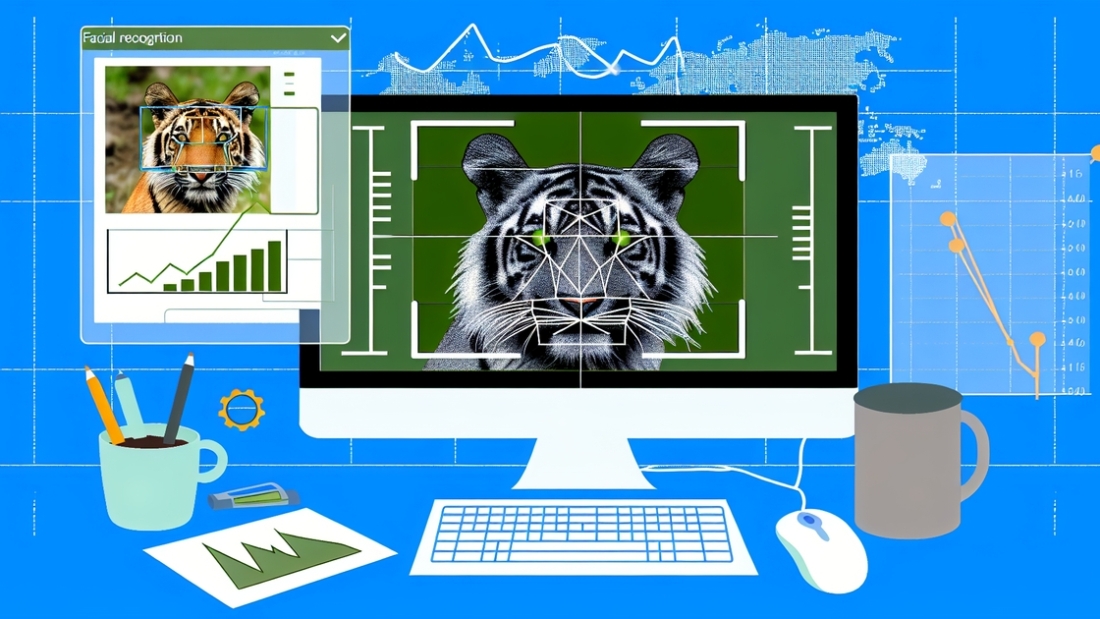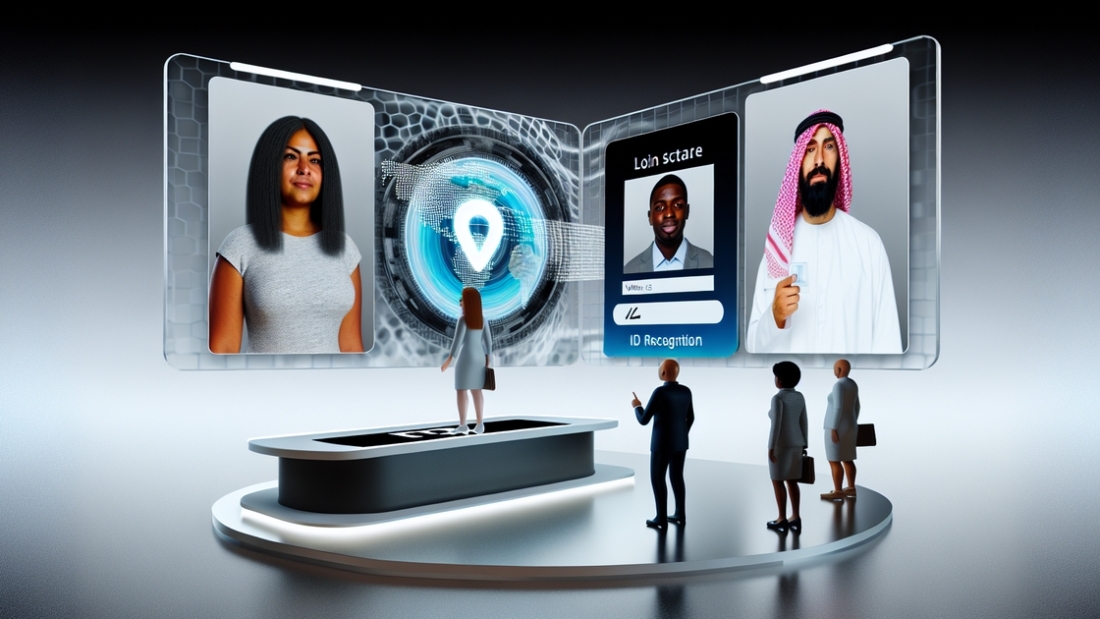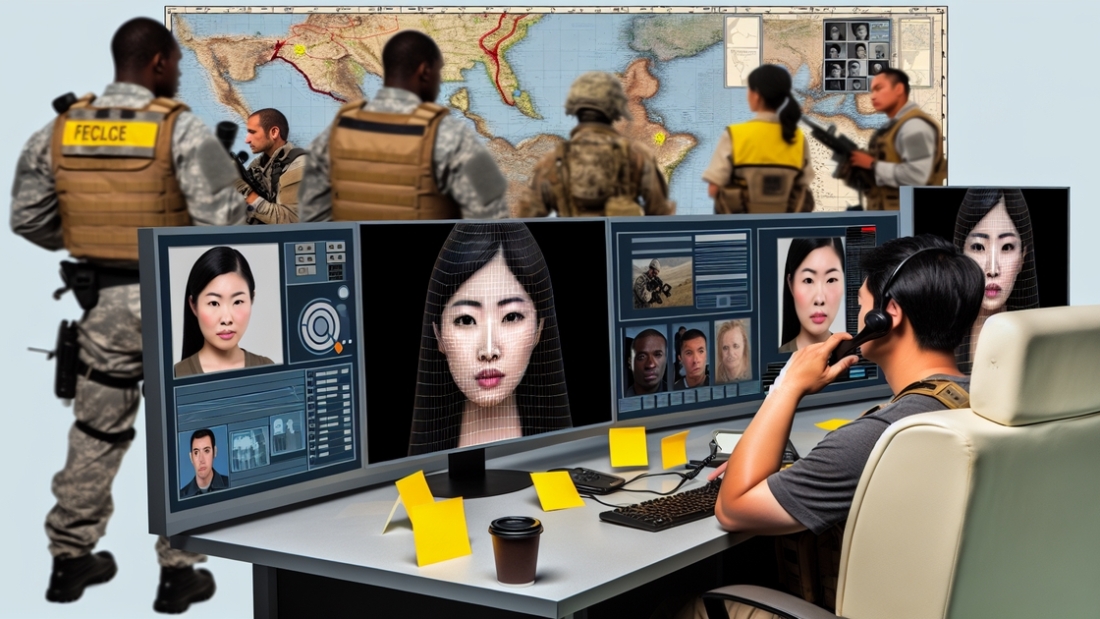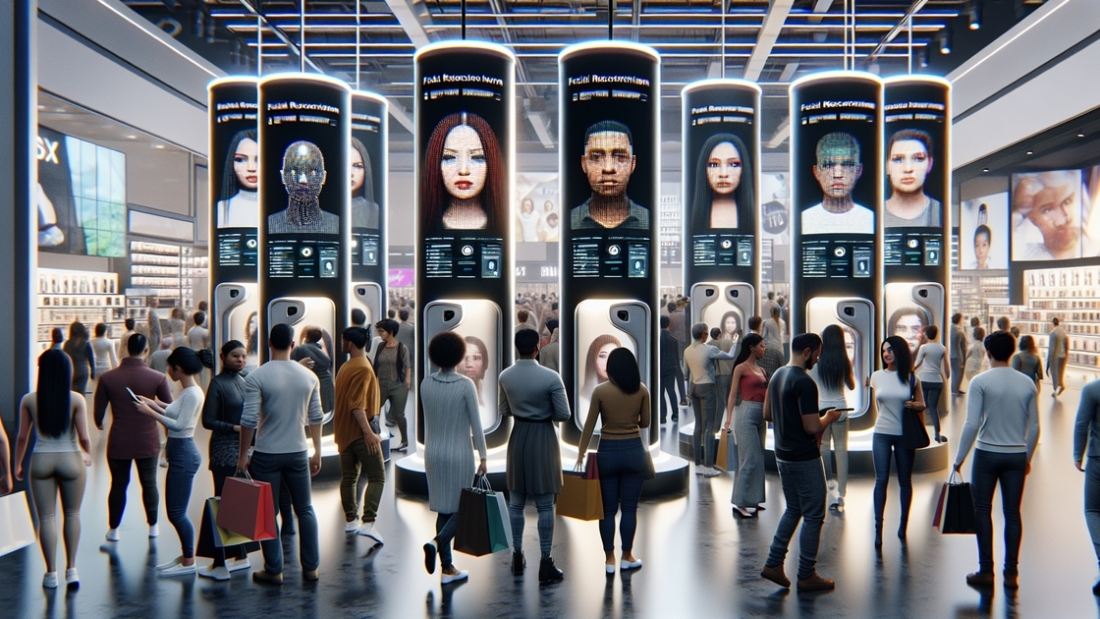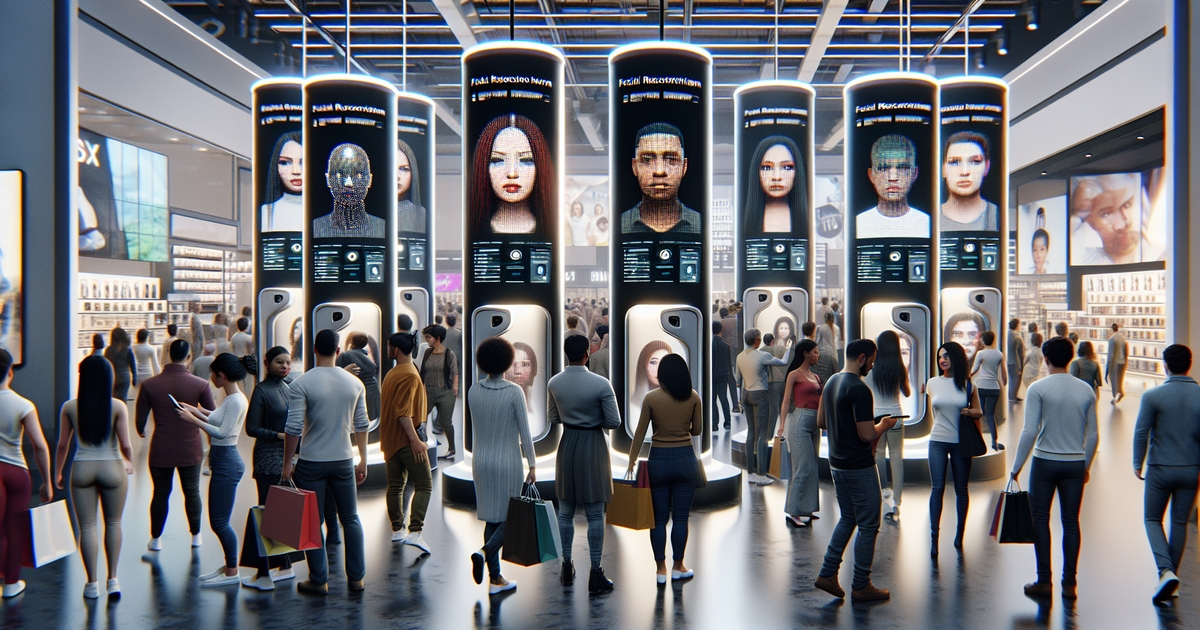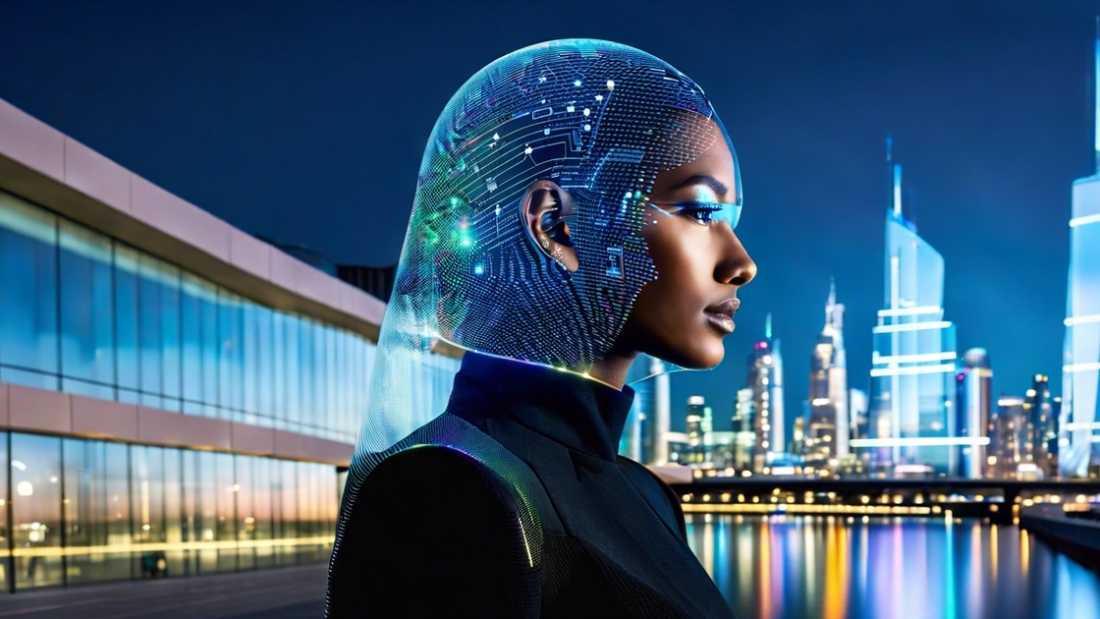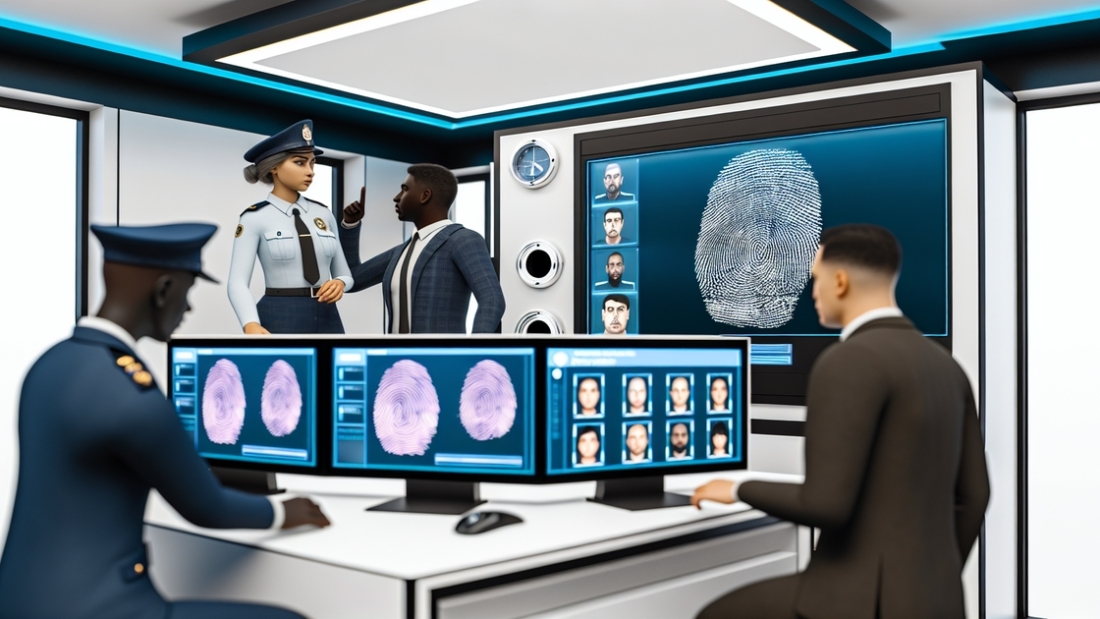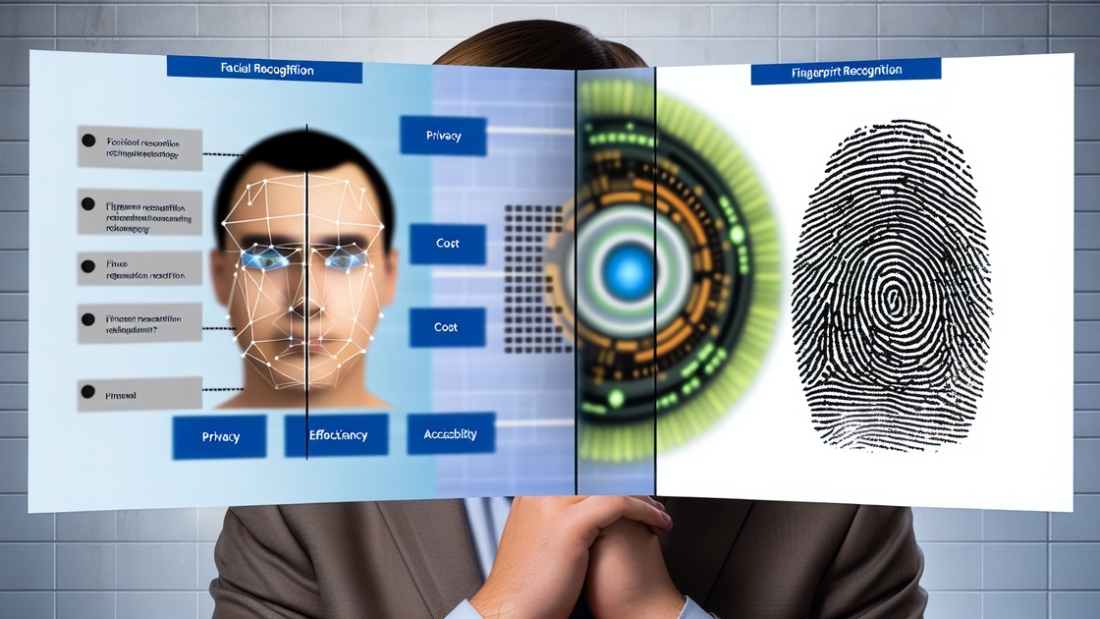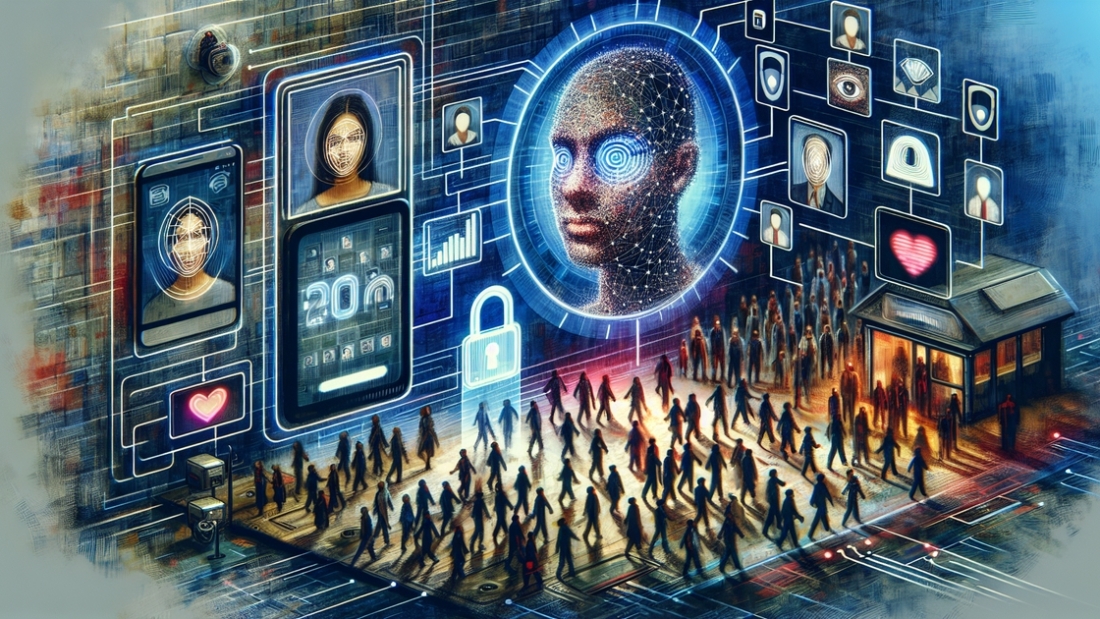Ever wondered how your smartphone knows it’s you? Face recognition is everywhere, from unlocking phones to enhancing security. This technology uses advanced algorithms to identify and verify faces in real-time. It’s not just about convenience; it’s a game-changer for security and personalization.
With face recognition, businesses can streamline operations, improve customer experiences, and boost safety. But how does it really work? And what are its implications for privacy? Dive into the world of face recognition to discover its benefits, challenges, and future potential. Whether you’re tech-savvy or just curious, this post will give you the insights you need.
Key Takeaways
- Understand the Basics: Face recognition technology uses algorithms to identify and verify individuals based on their facial features, playing a crucial role in security and authentication systems.
- Widespread Applications: From unlocking smartphones to airport security, face recognition is rapidly being integrated into various sectors, enhancing convenience and safety.
- Industry-Specific Uses: Industries like retail, healthcare, and law enforcement are leveraging face recognition to improve customer experience, patient care, and crime prevention.
- Global Reach: Countries worldwide are deploying face recognition technology for national security, public safety, and efficient service delivery, though adoption rates vary.
- Balancing Benefits and Risks: While face recognition offers significant advantages such as improved security and efficiency, it also poses challenges like privacy concerns and potential biases.
- Ethical Considerations: Ongoing debates focus on the ethical implications of face recognition, emphasizing the need for regulations to ensure responsible use and protect individual rights.
Understanding the Technology
Feature Extraction
Feature extraction involves analyzing facial features to identify unique markers in an image. This process includes measuring distances between key points like eyes, nose, and mouth. Geometric approaches focus on the shape and structure of the face. Photometric methods analyze pixel intensity values.
Advanced techniques like deep learning have improved accuracy. Deep learning models use neural networks to learn complex patterns in facial data; Try Playground for Face Recognition or Try online Face Recognition Demo. These models can handle variations in lighting, angle, and expression better than traditional methods.
Matching Algorithms
Matching algorithms compare extracted features with stored templates to identify individuals. Principal Component Analysis (PCA) simplifies data by reducing dimensions. It retains essential information while discarding irrelevant details. Linear Discriminant Analysis (LDA) maximizes class separability by focusing on differences between known categories.
Different algorithms offer varying levels of efficiency and accuracy. PCA works well for large datasets but may struggle with diverse faces. LDA provides better differentiation but requires more computational power. Real-world applications face challenges like poor-quality images or changes in appearance over time.
3D Recognition
3D recognition captures the shape and contours of a face for accurate identification. This technology uses depth sensors to create a three-dimensional model. Unlike 2D methods, it considers facial geometry from multiple angles.
Advantages of 3D recognition include effectiveness in varying lighting conditions and angles. It can detect subtle changes in facial expressions that 2D methods might miss. Recent advancements in 3D sensor technology have significantly improved recognition rates, making it more reliable.
Thermal Imaging
Thermal imaging uses cameras to capture heat patterns emitted by facial features. These patterns are unique to each individual, providing another layer of security.
Benefits of thermal imaging include its ability to work in low-light conditions where traditional cameras fail. It enhances security measures by integrating with standard facial recognition systems for comprehensive analysis.
Current Applications
Security Systems
Facial recognition enhances security systems in buildings and public spaces. It helps control access to restricted areas. Systems can identify individuals and grant or deny entry based on pre-set criteria.
Surveillance operations also benefit from facial recognition. Cameras equipped with this technology can detect known criminals or missing persons. This makes it easier for law enforcement to act quickly.
However, implementing facial recognition in security systems presents challenges. Privacy concerns are significant, as people worry about constant monitoring. False positives, where the system incorrectly identifies someone, can also occur. These issues need addressing for widespread acceptance.
Mobile Authentication
Smartphones now use facial recognition for secure authentication. Users can unlock their phones by simply looking at them. This is more convenient than entering passwords or PINs.
Facial recognition offers better security compared to traditional methods. It’s harder for others to replicate your face than guess a password. This reduces the risk of unauthorized access.
Technological advancements have improved mobile facial recognition accuracy and reliability. Modern smartphones use infrared sensors and 3D mapping to create detailed facial scans; Try online Face Recognition Demo or Try Playground for Face Recognition. This ensures the system works even in low light conditions or with slight changes in appearance.
ID Verification
Facial recognition verifies identities for official documents and online services. Governments use it for passports and driver’s licenses to ensure authenticity.
This technology reduces fraud and identity theft across various sectors. Banks, for example, use facial recognition to confirm customers’ identities during transactions.
Ensuring accuracy and fairness in ID verification processes remains challenging. The system must recognize diverse faces accurately to avoid bias. Continuous improvements are necessary to achieve this goal.
Healthcare Access
Healthcare settings use facial recognition for patient identification and medical record access. Patients can be identified quickly upon arrival, ensuring they receive appropriate care without delay.
The benefits include improved patient safety and streamlined administrative processes. Medical staff spend less time verifying identities manually, reducing errors and enhancing efficiency.
Privacy and ethical considerations arise when using facial recognition in healthcare. Patients may feel uneasy about their biometric data being stored digitally. Ensuring robust data protection measures is crucial to address these concerns effectively.
Industry Use Cases
Retail Innovations
Retailers use facial recognition for personalized marketing and theft prevention. Stores identify loyal customers and offer tailored promotions. This improves sales and customer satisfaction.
Facial recognition enhances the shopping experience. It speeds up checkouts and reduces wait times. Operational efficiency increases as staff can focus on other tasks.
However, tracking customers raises privacy concerns. Shoppers may feel uneasy about being constantly watched. Ethical implications include potential misuse of personal data.
Banking Security
Banks apply facial recognition for secure transactions and fraud prevention. Customers authenticate their identity quickly without passwords or PINs. This reduces the risk of unauthorized access.
Improved customer service is another benefit. Quick identification means faster service at ATMs and branches. Banks also enhance operational security by preventing identity theft.
Challenges exist in implementing this technology. Regulatory compliance varies across regions, complicating adoption. Customer acceptance is crucial; some may distrust new methods.
Social Media
ial media platforms use facial recognition for photo tagging and user authentication. Tagging friends in photos becomes easier and more accurate. Users enjoy a seamless experience when logging in.
Enhanced user experience is a major advantage. Facial recognition boosts security by verifying users’ identities, reducing fake accounts.
Privacy issues are significant concerns here. Collecting and storing facial data can lead to misuse or breaches. Ethical concerns arise over how companies handle this sensitive information.
Government Services
Governments utilize facial recognition for public safety, border control, and identity verification. Law enforcement agencies track suspects efficiently, improving crime-solving rates.
Streamlined operations result from faster identity checks at borders and airports. National security benefits as threats are identified swiftly using facial technology.
Concerns over government surveillance persist among citizens. There is potential for misuse, leading to wrongful arrests or privacy violations.
Global Deployment
United States
Facial recognition technology is widely used in the United States. Law enforcement agencies use it to identify suspects and solve crimes. Public services, like airports, employ it for security checks.
There are ongoing debates about privacy and civil liberties. Many worry that facial recognition invades personal privacy. Civil rights groups argue it can lead to wrongful arrests and discrimination.
Federal and state regulations aim to govern its use. The federal government has no comprehensive law yet. However, several states have enacted their own rules. For example, California bans the use of facial recognition in police body cameras.
European Union
The European Union prioritizes privacy and data protection in regulating facial recognition technology. The General Data Protection Regulation (GDPR) plays a crucial role here. It sets strict guidelines on data collection and usage.
GDPR impacts how companies deploy facial recognition. They must ensure data is processed lawfully and transparently. Consent from individuals is often required before using their biometric data.
Implementing facial recognition within the EU’s legal framework poses challenges. Companies need to balance innovation with compliance. Authorities must also address cross-border data flows within member states.
China and India
China extensively uses facial recognition for surveillance and public safety. Cameras equipped with this technology monitor streets, public places, and even classrooms. Commercial applications include customer identification in stores.
India employs facial recognition in national ID programs like Aadhaar. This system helps deliver public services efficiently by verifying identities quickly.
Privacy concerns are significant in both countries. Critics argue these technologies can be misused for mass surveillance without consent. There are fears of potential abuse by authorities or private entities.
Australia and Latin America
Australia adopts facial recognition for various purposes, such as law enforcement and border control. Airports use it to streamline passenger processing, enhancing security measures.
In Latin American countries, the technology is gaining traction too. Brazil uses it during major events for crowd management and safety monitoring.
However, there are challenges related to privacy and human rights in these regions. Some citizens feel their rights could be compromised by widespread surveillance.
Efforts to regulate this technology focus on protecting citizens’ rights while enabling its benefits. Governments work on creating balanced policies that address both security needs and individual freedoms.
Advantages and Challenges
Benefits Over Other Biometrics
Facial recognition offers several advantages over other biometric systems. One key benefit is its contactless nature. Unlike fingerprint or iris scans, facial recognition does not require physical contact. This makes it more hygienic and user-friendly.
Another advantage is ease of integration. Facial recognition can be easily incorporated into existing systems like smartphones and security cameras. It also has a wide range of applications, from unlocking phones to airport security.
User acceptance is higher for facial recognition compared to fingerprints or iris scans. Most people find it less intrusive. Technological advancements have significantly improved the accuracy and reliability of facial recognition. Modern algorithms can now recognize faces even in challenging conditions.
Privacy Concerns
Privacy concerns are a major issue with facial recognition technology. Unauthorized surveillance is one of the biggest worries. Cameras can capture images without people’s knowledge, leading to unwanted data collection.
This technology affects individual privacy rights and societal norms. People may feel constantly monitored, which can impact their behavior and freedom. There is a pressing need for robust privacy protections and consent mechanisms.
Deploying facial recognition systems without these protections can lead to misuse and abuse of data. Laws must ensure that individuals give explicit consent before their data is collected.
Legal Implications
Legal challenges surround the use of facial recognition technology. Consent and data protection are critical issues. Many jurisdictions are still figuring out how to regulate this technology effectively.
The legal landscape regarding facial recognition is evolving rapidly. For example, some cities in the United States have banned its use by law enforcement agencies due to privacy concerns.
Legislation plays a crucial role in balancing benefits with protecting individual rights. Regulations must address issues like data storage, sharing, and deletion to prevent misuse.
Technological Limitations
Facial recognition technology faces several technical challenges and limitations. Accuracy can be an issue, especially with diverse populations where bias may occur.
Environmental factors like lighting and angle also affect effectiveness. Poor lighting or odd angles can result in incorrect identification or failure to recognize a person at all.
Ongoing research aims to overcome these limitations. Developers are working on improving algorithms to make them more accurate under various conditions.
Controversies and Ethical Issues
Privacy Violations
Facial recognition technology has led to significant privacy violations. Notable instances involve unauthorized data collection and surveillance. For example, Clearview AI faced backlash in 2020 for scraping billions of images from social media without consent.
Such violations have serious consequences. Individuals may experience a loss of trust in technology and institutions. Society faces potential legal repercussions, including lawsuits and stricter regulations.
Transparency is crucial to prevent privacy violations. Companies must be accountable for how they use facial recognition data. Ethical guidelines should govern the collection and use of such data to protect individual privacy.
Law Enforcement Misuse
Law enforcement agencies have misused facial recognition technology. Concerns include racial bias and wrongful identification. Studies show that facial recognition systems often misidentify people of color at higher rates.
This misuse impacts public trust and civil liberties. People lose faith in law enforcement when wrongful arrests occur due to faulty technology.
Calls for oversight are growing louder. Regulations and ethical guidelines are needed to ensure responsible use by law enforcement agencies. These measures aim to protect civil liberties while allowing effective policing.
Bans and Regulations
Globally, there is a trend towards banning or regulating facial recognition technology. Several cities, states, and countries have implemented strict rules.
San Francisco became the first U.S. city to ban its use by government agencies in 2019. Other places like Boston and Portland followed suit with similar bans.
The motivations behind these actions are clear:
- Privacy concerns: Protecting citizens from unwarranted surveillance.
- Ethical considerations: Ensuring technology is used responsibly.
- Public pressure: Responding to demands for better regulation.
Future Directions
Advancements in Tech
Recent advancements in facial recognition technology have significantly improved its accuracy, speed, and adaptability. New algorithms now recognize faces more precisely even in challenging conditions like low light or at different angles. These improvements address previous limitations and biases that plagued earlier versions.
Developers are creating techniques to mitigate racial and gender biases in facial recognition systems. For instance, some new models use diverse datasets during training to ensure fairer outcomes. These advancements could lead to broader acceptance of facial recognition technology across various sectors.
As these technologies evolve, their potential applications will expand. Enhanced accuracy and speed mean quicker identification processes in security settings. Improved adaptability allows for usage in more dynamic environments such as public events or crowded places.
Potential New Applications
Emerging applications of facial recognition are appearing in education, entertainment, and transportation sectors. In schools, the technology can help monitor attendance and enhance security by identifying unauthorized individuals on campus.
In entertainment, theme parks can utilize facial recognition for personalized experiences. This includes customized ride photos or tailored recommendations based on visitor preferences.
Transportation systems might employ this technology for seamless ticketing and boarding processes. Automated gates could recognize passengers’ faces instead of requiring physical tickets.
However, these new applications come with challenges. Privacy concerns are significant as widespread use of facial data raises ethical questions about surveillance and consent. Balancing innovation with privacy protections will be crucial.
The creativity driving these expansions is notable. Developers are constantly finding new ways to integrate facial recognition into everyday life while addressing ethical considerations.
Privacy and Security Measures
Implementing robust privacy and security measures is vital in developing facial recognition systems. Best practices include encrypting facial data to protect it from unauthorized access. Access controls should limit who can view or modify this sensitive information.
Privacy impact assessments (PIAs) help identify potential risks associated with using facial recognition technology before deployment. PIAs ensure that developers consider privacy implications throughout the development process.
Security audits regularly review systems to detect vulnerabilities that could be exploited by malicious actors. These audits verify compliance with established standards and best practices for protecting data integrity.
How It Affects You
Daily Life Impact
Facial recognition technology is now part of daily life. People use it to unlock smartphones quickly. It helps in accessing apps without passwords. This makes things faster and more convenient.
Personalized advertising uses facial recognition too. Stores can show ads based on who you are. This can feel like a custom shopping experience.
However, there are drawbacks. Privacy concerns are a big issue. Your face data can be stored and used without your knowledge. Some people worry about being constantly watched.
Public opinion is changing as facial recognition becomes common. Some see it as helpful, others as invasive. Its integration into everyday activities continues to grow.
Privacy Considerations
Privacy is crucial when using facial recognition technology. Consent and data protection are key factors. Companies must ask for permission before collecting face data.
Ethical implications also need attention. Widespread use raises questions about surveillance and control. Clear privacy policies help address these issues.
Individuals play a role in managing their privacy too. Options to opt-out or limit exposure exist but require awareness and action.
Staying Informed
Staying informed about facial recognition technology is important. New developments impact privacy and society regularly.
Resources like news articles, tech blogs, and academic papers provide updates. Legal changes also affect how this technology is used.
Public discourse shapes the future of facial recognition technology too. Advocacy groups push for better regulations and practices.
Closing Thoughts
Face recognition technology is reshaping our world, from industry applications to personal use. You’ve seen its benefits and challenges, and now it’s time to consider how it impacts you directly. Whether you embrace or question this tech, staying informed is crucial.
Think about the ethical implications and future developments. Your voice matters in shaping fair and responsible use. Stay engaged, share your thoughts, and help drive positive change in this evolving landscape.
Frequently Asked Questions
What is face recognition technology?
Face recognition technology identifies or verifies a person using facial features. It uses AI algorithms to analyze and match faces in images or videos.
Where is face recognition currently being used?
Face recognition is used in security systems, smartphones, airports, retail stores, and social media platforms for identity verification and personalized experiences.
What are the main industries using face recognition?
Key industries include law enforcement, banking, healthcare, retail, and transportation. Each industry leverages this technology for enhanced security and user convenience.
How widespread is the global deployment of face recognition?
Face recognition is globally deployed with significant usage in countries like China, the USA, and Europe. It’s expanding rapidly due to advancements in AI and demand for security solutions.
What are the advantages of face recognition?
It offers improved security, efficient identification processes, and seamless user experiences. It reduces fraud and enhances access control systems across various applications.
What ethical issues surround face recognition technology?
Concerns include privacy invasion, data security risks, potential biases in AI algorithms, and unauthorized surveillance. These issues spark debates on regulation and responsible use.
How might face recognition affect individuals?
Individuals may experience enhanced security and convenience but also face privacy concerns. Awareness of data usage policies and opting for secure systems can mitigate risks.
